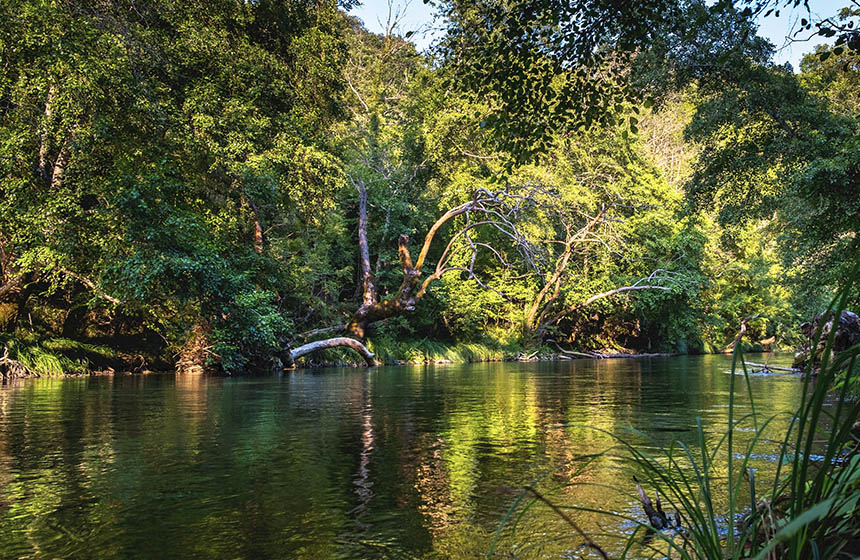Fire Risk Reduction in the San Carlos Apache Reservation
The U.S. Geological Survey (USGS) partnered with the San Carlos Apache Tribe in order to implement improved fire mitigation strategies combining indigenous management and satellite imagery.
Nature-based Intervention:
Satellite imagery was implemented alongside indigenous fire management techniques to compliment the Tribe’s implementation of techniques to reduce fire intensity. The satellite images were able to highlight the best places within the reservation for the construction of firebreaks and the ideal locations on rivers to construct water detention installations. These implementations work together with the tribe’s forestry interventions, such as tree thinning to return the tree densities to their pre-colonial baselines.
Overview of context and outcomes:
The San Carlos Apache Reservation lies in an area which is extremely prone to fires due to the combination of arid landscapes and dense woodlands. Historic fire management practices from the US government have allowed the buildup of fuel loads within the forest and climate change has lead to an increase of the fire risk to the area. Many of Arizona’s largest fires on record have happened in or near the San Carlos Apache Reservation, including the 2011 Wallow Fire, which was the states most destructive. However, the San Carlos Apache Reservation faced less damage than the surrounding forest service managed lands due to the tribe’s fire reduction strategies.
Case effectiveness on
Climate change
The implementation of this mitigation strategy is a direct response to the increasing aridity and elevated fire risk in the region due to climate change. By strategically implementing fire breaks, water detention installations, and tribal forestry management they can decrease the risk faced by the community at the San Carlos Apache Reservation. The water detention installations and tree thinning also help increase water availability and reduce water stress on the landscape. These interventions also have the added benefit of reducing the risk of post-fire flooding and erosion.
Ecosystem health
Ecological effect: PositiveThe reduction of fires in the region helps promote both habitat connectivity and habitat quality for the species that call the San Carlos Apache Reservation home.
Socioeconomic outcomes
The thinning of trees also supports the local Apache timber business. The thinned trees can be turned into slabs and then sold to make furniture. This allows the project to also help support local livelihoods.
Governance
This project is governed by the San Carlos Apache Tribe who works with the USGS for additional capacity.
Finance
The project is financed by the USGS and the San Carlos Apache Tribe.
Monitoring and evaluation
The USGS provides satellite monitoring of the site in order to evaluate current fire risks and highlight opportunities for interventions. The Apache foresters also monitor the forest to evaluate the density of trees within stands.
Trade-offs and limitations
No information yet available on tradeoffs.

Intervention type
- Management
Ecosystem type
- Tropical & subtropical forests
Climate change impacts addressed
- Reduced water availability
- Wildfire
Instigators
- Community/self driven
- State/district/local government agency
Societal challenges
- Climate change adaptation
- Disaster risk reduction
- Water security
Outcomes
- Food security: Not reported
- Water security: Positive
- Health: Not reported
- Local economics: Not reported
- Livelihoods/goods/basic needs: Positive
- Energy security: Not reported
- Disaster risk reduction: Positive
- Rights/empowerment/equality: Not reported
- Conflict and security: Not reported
- No. developmental outcomes reported: 4
Resources
Read resource 1Literature info
- Grey literature



